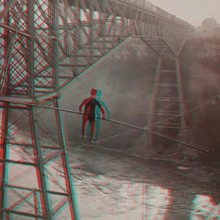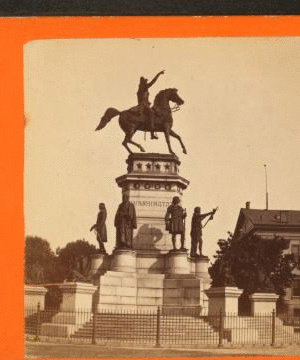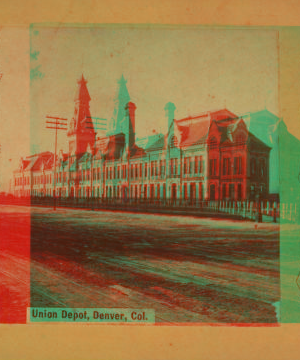Welcome to the World of Old School 3D Photography
Over a hundred years before 3D technology invaded movie theaters and living rooms, another form of 3D image technology was incredibly popular around the globe. The images were called stereographs, and the technology was quite simple: two pictures of the same image, shot from slightly different angles, were viewed through a narrow device that only let you see one image with each eye, giving the appearance of a 3D image (remember playing with a ViewMaster as a kid? The technology is quite similar). Now, thanks to the work of the New York Public Library, you can view over 40,000 stereographs, most of them over a century old, and create your own animated GIF that offers the illusion of a 3D image. In addition, you can also create modern 3D photos of the same images, viewable through those hokey blue-red 3D glasses. The best part? Sharing your creations with your fellow arts lovers!
technology was incredibly popular around the globe. The images were called stereographs, and the technology was quite simple: two pictures of the same image, shot from slightly different angles, were viewed through a narrow device that only let you see one image with each eye, giving the appearance of a 3D image (remember playing with a ViewMaster as a kid? The technology is quite similar). Now, thanks to the work of the New York Public Library, you can view over 40,000 stereographs, most of them over a century old, and create your own animated GIF that offers the illusion of a 3D image. In addition, you can also create modern 3D photos of the same images, viewable through those hokey blue-red 3D glasses. The best part? Sharing your creations with your fellow arts lovers!
As reported by the New York Times last week, the NYPL Lab’s site, called the Stereogranimator, is simple to use. To create an animated GIF, first, you select a pair of similar looking pictures from a collection of over 40,000 images, some of which date back to the nineteenth century. Second, you choose your focal point within the image and the speed of the animation. Finally, you can share the animated GIF on social media sites or embed in your blog. You can see my custom image below!
 GIF made with the NYPL Labs Stereogranimator
GIF made with the NYPL Labs Stereogranimator
The process for the 3D anaglyph image is similar. After choosing a pair of images, you choose your focal point within the image and hit the create button. You can see my 3D image below, which can be aided just in case you have those old-school blue-red 3D glasses!
 ANAGLYPH made with the NYPL Labs Stereogranimator
ANAGLYPH made with the NYPL Labs Stereogranimator
As I scrolled through the photographs, it surprised me how many images were taken back then that look so similar. As artist Joshua Heineman, the brains behind the operation, describes on the NYPL Lab site, this was intentional: looking at both pictures, the viewer could be provided with a sense of depth that simply was not possible by looking at one image. With so many of these image pairs being captured, the public would use the stereograph, the ultimate entertainment device of the late 19th century, to see a very early form of 3D technology for themselves. Like video games or movie theaters today, the technology was a hugely popular for several decades.
The New York Public Library’s site is another example of an encouraging trend: more libraries opening up their vast collections to an online audience for free. While some library systems have been hesitant to open up too much of their catalog to online audiences, the NYPL has been a leader in embracing the online community: in addition to their stereograph project, the library also has a project titled “What’s on the Menu?,” where people can help the library transcribe historical restaurant menus to add to its data of food prices and trends.
Even better? Improving the experience through technology, in this case with animated and 3D images. While the technology is far from groundbreaking for today’s audience, it does offer a unique historical look back at a technology that was so popular a century and a half ago.
We here at Tech in the Arts have written before about all the cool things happening today with 3D technology, and none of them have to do with the latest films hitting the movie theater. Through collaboration, open source technology and access to historical materials, the New York Public Library and others are embracing a new movement towards more social interaction between institutions and their patrons, a movement we strongly embrace and encourage.